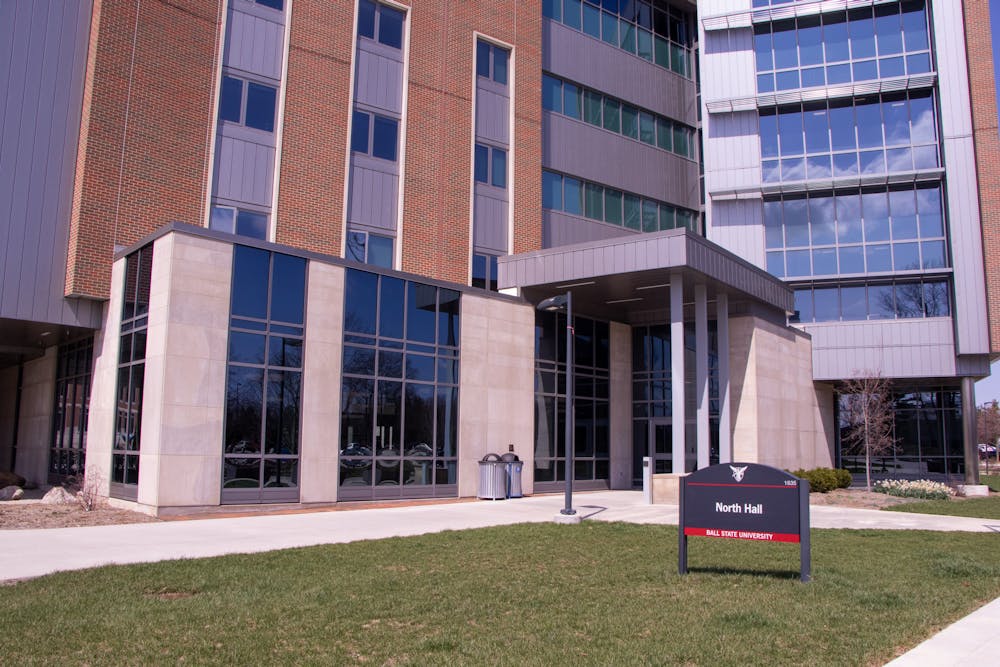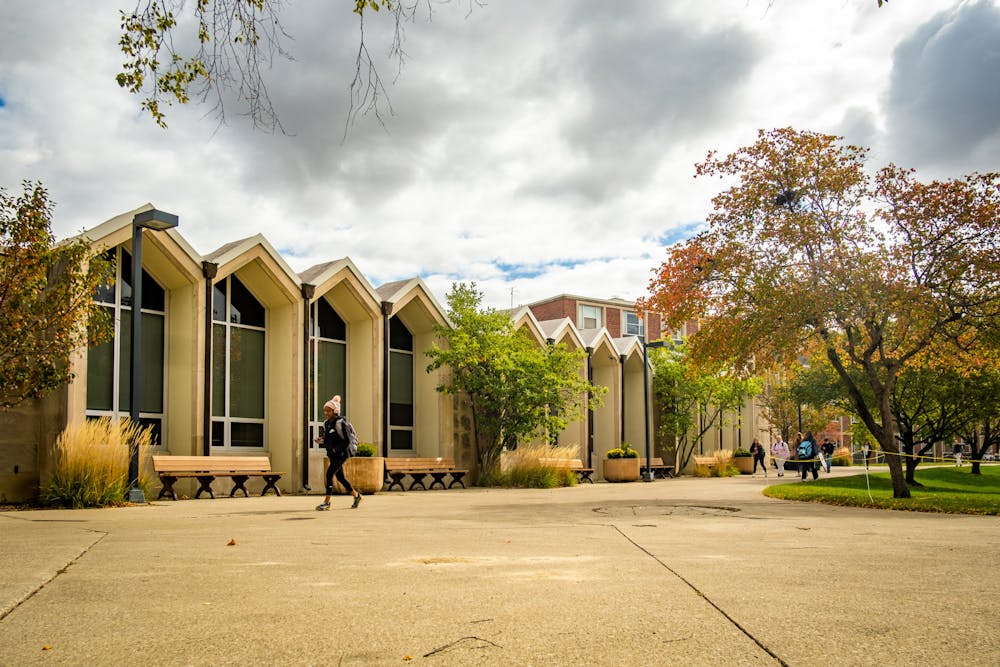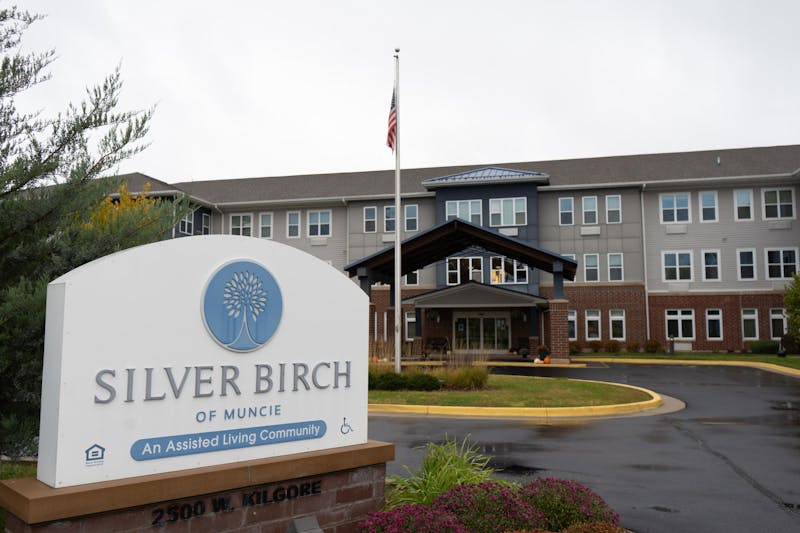Close to 60 years after the completion of the Noyer and LaFollette complexes and Schuemann Stadium, the new North Residential Neighborhood has opened, the demolition of LaFollette Complex has been completed and Ball State is preparing to close the doors of Noyer Complex’s Howick/Williams Hall.
Graduate assistant for marketing strategy Makenna McLeod said via email that Ball State has just wrapped up a long-term master plan which included multiple residence hall renovations and new construction.
The Plan
“This plan was developed and implemented with an understanding of student residency and enrollment needs,” McLeod said via email. “The demolition of LaFollette was a part of that master plan, and appropriate room space allocated in the renovations, and new construction plans were made to ensure that the department could adequately meet student needs.”
This long-term plan, she said, is focused on large-scale building renovations or constructions over the next 20 years. This new strategic plan is coined by Ball State as “Destination 2040: Our Flight Path.” While that long-term plan recently ended with the completion of the North Neighborhood, Ball State will soon begin the development of a new long-term plan that will take the university into the next several decades.
“The 10-year plan allows us to have a robust plan to maintain the beautiful buildings we have on campus,” McLeod said via email. “This type of plan makes sure that we prepare for regular placement of mechanical or electrical systems and, generally, to make sure that our buildings maintain a warm and welcoming environment for our students.”
New Dorms and Renovations
Marci Mullaney, assistant director for marketing strategy, said via email that the completion of the new North Residential Neighborhood, including the revitalization of the Botsford/Swinford and Schmidt/Wilson Halls, and the creation of two new residence halls — Jack Beyerl and North West — have created more bedspaces and brand new modern spaces for students to live in. There are a total of 11 residence halls outside of Howick/Williams.
“The last time the Howick/Williams wing underwent a complete renovation was 1996, and it is also one of Ball State’s residential halls without air conditioning, which affects the demand of students wanting to live in that space,” Mullaney said via email. “Further, the wing was not a living-learning community, which wouldn’t disrupt an already-existing academic structure.”

Early in the spring 2023 semester, residents of the hall were notified of the building’s closure for fall 2023 as Ball State prepared for the returning student residence hall signup process, Mullaney said via email.
“On behalf of the Office of Housing and Residence Life at Ball State, we stand behind this decision as we do see it will benefit our on-campus population in the long-run,” Mullaney said via email. “With the new space available for students to live in, we are able to meet student housing needs in our other facilities, allowing us to consider future uses for Howick/Williams.”
To combat any rumors, Mullaney noted via email that Howick/Williams is not being torn down or demolished.
Leaving a Legacy
According to Ball State Housing and Residence Life’s website, both of Noyer Complex’s halls, Howick/Williams and Baker/Klipple, are each full of Ball State history and tradition and are loved by their residents. Both halls also adopted mascots — Baker/Klipple took the bee “under its wing,” and Howick/Williams acquired the armadillo.
“Since many students have lived in Howick/Williams, its legacy lies with the former Cardinals who lived there and their experiences of the community, fellowship and camaraderie while residing in the building,” Mullaney said via email. “The armadillo mascot has since been retired, but it was something that became of significance to our hall staff and became a personality of its own.”
Having lived in LaFollette herself as a first-year undergraduate, Mullaney said via email that living in a residence hall helps students transition to college and provides them a supportive environment where they can make friends, branch out and develop independence while providing important and necessary amenities, resources and academics.
Alan Ihms, assistant residential coordinator for Howick/Williams, said via email that when he lived in a residence hall during his time as an undergraduate, it was his first time living away from home. He had no means of transportation, he simply relied on walking and bartering with friends who had their own ways of transit.
“I’m kind of glad that I had limited access to home because it allowed me to touch down roots and work to cultivate a network of friends and people I could go to for help,” Ihms said via email. “I think that getting comfortable with my campus allowed me to appreciate it more and want to persist to the end and get my degree. It also offered me the chance to get outside of my comfort zone.”
RAs in University Apartments

Ball State also announced the placement of resident assistants (RA) in their University Apartments to enhance the sense of community and inclusiveness they hope resident halls have.
Mullaney said via email while the decision to place RAs in the apartments is totally separate from the Howick/Williams decision, current RAs in Howick/Williams might wish to be considered for placement in the apartments, but that would be solely their decision.
McLeod also added via email that RAs serving in the apartments will have job responsibilities very similar to those of the RAs in the residence halls — to help students make the most of their Ball State experience.
“Current Housing and Residence Life student staff have shown great interest and enthusiasm for the creation of this role,” McLeod said via email. “There is a competitive field of applicants for the job, and we look forward to working with our student staff leaders to enhance the community and service experience for our residents living in the University Apartments.”
Similar to the university’s traditional residence halls, these team members will plan community events, work at the apartment office desk, report facility concerns to maintenance and custodial staff and assist in addressing resident concerns.
Apartment RAs will also be trained to meet the specific needs of an upper-class community, so the types of initiatives and community events they plan may look a little different than that of the traditional residence hall experience.
Student Feedback
However, former RA Alicia Villalobos, believes the role expectations between the residence halls and the apartments won’t be any different, and the costs of this decision will outweigh any benefits.
Since the apartments house upperclassmen students and families, Villalobos said residents aren’t going to be as reliant on the RAs as they would be if they were living in the residence halls. She also disagrees with this decision because she thinks the university is trying to place too much control on students.
“Students move into the apartments to have more freedom than that of the residence halls, and now they are just bringing the atmosphere of the residence halls to the apartments by bringing in RAs,” she said.

According to Ball State’s Housing and Residence Life website, RAs receive a stipend of $1,300 per year paid in installments — $50 every two weeks. They also receive full room and board, and a fee waiver for the installation of air conditioning.
“Our pay is not enough as it is,” Villalobos said. “It is not even enough to pay for groceries, let alone to make financial aid payments — it is not enough to make a sustainable living. We do not get supported or paid enough by the university for everything we do.”
While she is sad the hall is closing, former Howick/Williams RA Lauren Docter said she supports the decision to close the hall, as the conditions of the building are pretty brutal.
“The building is old, the bathrooms are old, something needs to be done,” she said. “Closing it down is definitely better than a renovation though, just for the fact that it is even more unsafe for people to be living in a building that is under construction.”
Docter also did not know RAs were being put in the University Apartments but agrees with Villalobos in that she believes it is not a good idea.
“If you are in the apartments, it is kind of like you are meant to be off-campus, but it is still convenient because they are still connected to the bus routes,” she said. “I personally don’t think they need RAs there, especially since people over the age of 21 live there, and they are looking for that freedom they can’t get in the dorms.”
Since the opening of the Noyer Market in place of Noyer Dining that closed in 2022, Docter said many people are now upset because Ball State is closing the entire area due to the Howick/Williams closure.
Docter and Villalobos also disagree with the closure of the Howick/Williams Hall due to the fact Ball State is breaking up a community between the RAs and the residents, and RAs will be displaced and have to find a new place to live next school year.
“I know people that are living in Noyer, and they are like, ‘I have lived in Noyer my entire school career. Where am I going to go now?’ because they have kept their room for all this time,” Docter said. “I have heard positives and negatives about it, kind of a mix of everything.”
Docter said students have some of the same views of the Woodworth Complex as they do with Noyer as a whole because it is also old and not air-conditioned.
According to Ball State’s Campus Master Plan, there is an aim to develop a strategic renovation plan for Woodworth as well as the Studebaker West building.
Contact Savannah Jordan with comments at sjordan4@bsu.edu or @savmjordann.





The Daily News welcomes thoughtful discussion on all of our stories, but please keep comments civil and on-topic. Read our full guidelines here.